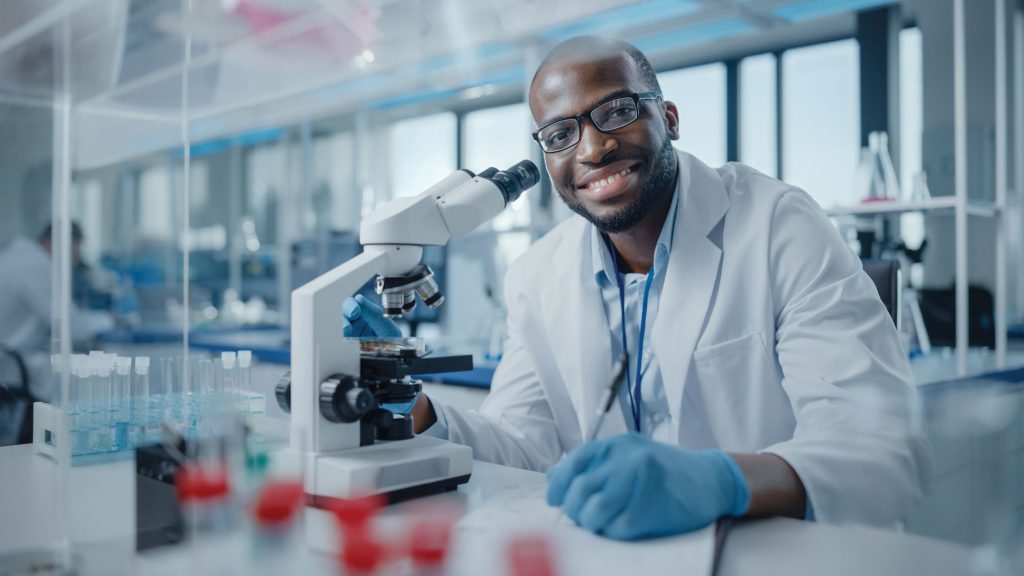Tips for Cleaning Microscopes

Are your microscopes dusty and getting dustier? Are there smears across new, clean slides? Do parts seem loose? Use these simple tips to keep your scopes clean and in tip-top condition all year long. Dust and debris are the number one issue resulting in poor quality microscope viewing. Dust covers will help. Occasional cleaning of […]
Teacher’s Guide to Microscopes

Teacher’s Guide to Microscopes Are you planning to purchase some new microscopes to replace old ones or to meet the needs of increased enrollment? If you’re a first-time buyer, the task can seem daunting. This brief guide explains the basics of microscopes and their applications, helping you choose the right models for your classroom or […]
How to Use a Student Compound Microscope

How to Use a Student Compound Microscope By Monty Clayton Purchasing a microscope is an educational investment. When you properly use and care for it, it will provide years of uncompromising service. This article assumes a basic knowledge of the student-level compound microscope but highlights key points to ensure success. Use the following steps to […]
Simulating Macroinvertebrate Sampling for Assessing Freshwater Quality

CAROLINA LABSHEETS Overview NGSS Standards Objective Materials Teacher Preparations Quick Links Close Quick Links Open Quick Links Overview NGSS Standards Objective Materials Teacher Preparations Overview NGSS Standards Objective Materials Teacher Preparations Overview Clean, noncontaminated water is an essential natural resource for all living organisms—animals and plants. Assessing water quality provides students the opportunity to gather […]
Three-Point Linkage with Drosophila

Carolina LabSheets™ Overview In this lab students investigate the effects of gene linkage and crossing-over on the inheritance of three traits of Drosophila. They use the data they collect to construct a linkage map of the gene loci. 172051 Three-Point Linkage: The vial of testcross fruit flies is from a cross between females heterozygous for […]
Lumbriculus: Contraction Rate of the Dorsal Blood Vessel

Carolina LabSheets™ Overview In this introductory physiology lab, students determine the contraction rate of the dorsal blood vessel of the blackworm Lumbriculus. Students then design and conduct an experiment to determine the effect of temperature change or chemical exposure on the contraction rate. Student Lab Sheet Needed Materials* Lumbriculus culture (141720 for 30 students) dropping […]
Protists: Key to Algae Mixtures

Carolina LabSheets™ Overview In this lab activity students use a simple dichotomous key to identify several genera of algae contained in our algae mixtures. The key avoids the use of highly technical terms so that even beginning students can use it. Student Lab Sheet Key to Algae Mixtures Needed Materials Algae Mixture (see recommendations below) […]
Bacterial Growth on MacConkey Agar

Carolina LabSheets™ Overview In this lab studentsculture three bacteria on nutrient agar and MacConkey agar and record the results. Nutrient agar is nonselective, meaning that it supports the growth of a broad range of bacteria. MacConkey agar inhibits the growth of Gram-positive bacteria and is thus a selective medium. MacConkey agar is also a differential […]
Two-Point Linkage with Drosophila

Carolina LabSheets™ Overview In this lab students explore the genetic consequences of gene linkage using an F1 cross of Drosophila. 172050 Two-Point Linkage:The vial of F1 flies is from a cross between females having yellow bodies and white eyes (172290 yellow white) and wild-type males having gray bodies and red eyes (172100 wild type). Yellow […]
Vinegar Eels

Carolina LabSheets™ Overview In this lab, students observe vinegar eels. These small animals, barely visible without magnification, are found in unpasteurized cider vinegar, where they feed on the bacteria responsible for the conversion of apples to vinegar. Vinegar eels, Turbatrix aceti or Anguillula aceti (Muller, 1783), are examples of roundworms, or nematodes.. Download Student Lab […]
